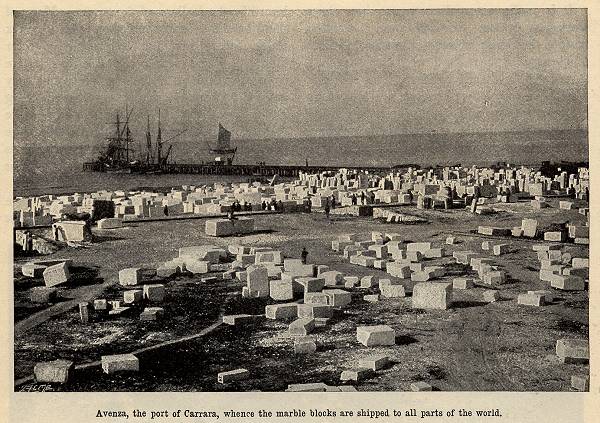Marble through the ages.
The story begins in the Mesoproterozoic age, long before any vertebrate creature walked the Earth. The soft white sediments of the long lost, warm Tethys sea, metamorphosed, folded, twisted and refolded into smooth knots of fine lustrous, sphered, symmetry. Bands of impurities take on beautiful colours, a profusion of shapes and forms. This is Marble in all its infinite variety. Scorched by the immense heat of nearby igneous intrusions, some becoming bleached and brightened into gleaming luminescent white marble. Thrust up to form the hills and mountains of Makrana, Paros and Carrara.
We now move forward countless millennia. The scene is set for building of one of the first Hindu temples, the foundations of which are hewn from the solid rock. A myriad army of slaves toil, beneath the blazing sun, harnessed to huge blocks of gleaming white marble on rafts and rollers.
Now for a change of scene, we move to ancient Egypt. There is the same blazing sun bearing down, the same burning earth another army of slaves toil. Once again it is marble gleaming and white in the midday sun, once again it’s the building of a temple. We go forward another three thousand years. Now is but a remote memory, but the sun baked land is littered with the ruins of past civilisations. Dig where you will and you will unearth marble Gods, marble columns, an obelisk.
Then blooms the imperishable beauty, the flowering of Greek Art in a profusion of marble. The stone taking on a new life, to live once more under the genius of the artists touch. A profusion of great pedimented, marble columned temples, to the new Gods. The temple of Zeus, Olympia, the Parthenon, Athens , the Gods of old all but forgotten. Their temples lie in ruins amongst the baked dunes beneath the same blazing sun.
Another people, another Empire is born. Toiling up the steep Capitoline hill of Rome, the oxen bear a statue of Claudius, carved from a single block of freshly hewn, purest white marble, stands dazzling and white beneath the deep blue of the Italian sky. Echoing the Roman metropolis, that is marble Rome in its prime. Its marble temples, its marble theatres, its marble monuments, its marble baths, its marble tombs.
Once again we move forward two thousand years. In the history of marble what is a thousand years?
We now live in the confusion of modern things. Machines are building vast steel and glass towers, towers to house the workers, the once deep blue skies bear the scars of our frenetic new metropolis, all that is natural seems forgotten. But still the backdrop for this last scene is the same. Still rising like wildly twisted snowdrifts are the mountains of Nagaur, Paros and Carrara. Still from these white hills can be seen distant harbours, with ships of gleaming white marble bound for distant shores. Much of the history of the Earth is to be read on these stones.
The quarries at Carrara are four or five great glens, running up into a range of lofty hills, until they can run no longer, and are stopped by being abruptly stranded by nature. The quarries, or caves as they call them there, are so many openings, high in the hills, on either side of the passes, where they blast and excavate for marble: which may turn out good or bad may make a man’s fortune very quickly, or ruin him by the great expense of working for nothing. Some of these caves were opened up by the ancient Romans, and remain as they left them to this hour. Many others are being worked at this moment; others are to be begun tomorrow, next week, next month; others are unbought, unthought of; and marble enough for more ages than have passed since the place was resorted to, lies hidden everywhere patiently awaiting its time of discovery.”

Charles Dickens: Pictures of Italy
We have a wide range of marble fireplaces and antique fireplaces here at Westland London, so please visit us to find out more.